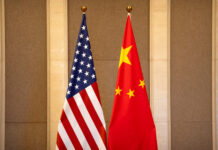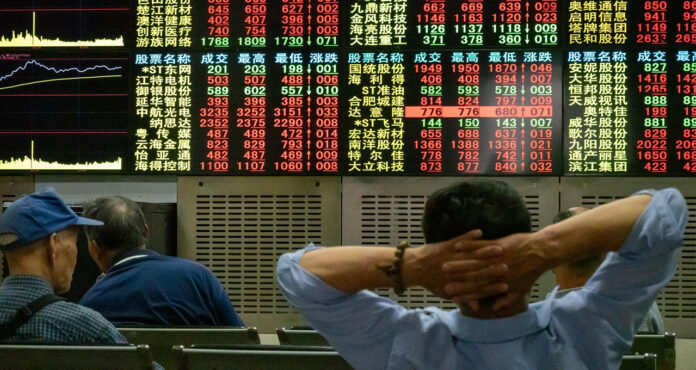The Cold War’s dynamics have changed. The Cold War between China and the USA) is an economic competition, not a military. China is emerging as a superpower, expanding economically in and across the region, while the USA still believes in military power. The USA is a part of a quadrilateral alliance consisting of the USA, India, Japan, and Australia, to deter China. This alliance is called the QUAD or the Asian NATO.
The shift in global politics has occurred due to competition between China and the USA. India is a regional power, and is in competition with China. The USA and India are coming close strategically after the collapse of the USSR because the USA sees India as a strategic bulwark against China.
India is becoming the main player in the competition between the USA and China because India needs strategic support to counter Chinese influence and hegemony in the Himalayan region. Russia and India have been strategic partners since the era of the USSR. Russia supplies more than 60 percent of the equipment in the Indian armed forces, and India has to rely on Russia for upgradation and spare parts of military equipment.
India had adopted a “Forward Policy” towards China since the time of Prime Minister Jawaharlal Nehru, which meant the aggressive patrolling of Indian troops in the disputed area between China and India, and the underestimation of Beijing. Due to this, India went to war with China in 1962. The clear evidence about Indian policy is the Henderson-Brooks report that the war between China and India could have been avoided if Indian generals had wisely advised the political leadership. The cause of the Indian defeat was poor military advice, a gain of the disputed area, underestimation of China, political mileage, interference of bureaucrats, and military shortcomings.
The world was divided into blocs during the Cold War era. India never joined any bloc. However, India’s tilt was towards the USSR, and it maintained cordial relations with the USA. The last two decades have been a turning point in Indo-US relations. India has been blue-eyed for the USA since the era of the junior Bush. President George W. Bush signed a civil nuclear deal in 2008, which was very concerning for Pakistan, and this deal imbalanced the Southern Asia region.
In the last days of President Obama, the US Administration declared India a “Major Defence Partner”. However, President Trump continued this policy, and played his role in strengthening this partnership. The USA changed the name of the US Pacific Command in 2018, and renamed it “U.S Indo-Pacific Command,” which was a major shift in US policy, and India gained more leverage.
Skirmish between China and India occurred in Ladakh, and caused casualties on both sides in 2020. However, people have yet to learn about the actual figure of casualties. Both countries went to the worst form of relations. After the Ladakh incident in 2020, Indian defence minister Rajnath Singh visited Moscow to attend the 75th Victory Day parade commemorating the defeat of Nazi Germany. Mr Singh settled a defense deal with his Russian counterpart that India would get fighter jets (Su-30s) and other arms from Russia for $2.4 billion.
China and Russia are binding themselves in strategic relations to counter US hegemony in this region. China has already bought the Russian S-400 Defense system, and deployed it. However, India signed a defense deal with Russia to acquire five squadrons of S-400 for $5.4 billion in 2018. India has received 36 Rafale fighter jets from France for more than $30 billion to balance air capabilities with China. However, the USA has concerns over Russian equipment hacking because the USA is providing arms and sensitive technology to India. India has acquired the first squadron of the S-400 Defense system from Russia, and deployed it in Punjab near Pakistan, covering areas of Punjab, Gilgit Baltistan, Azad and Jammu Kashmir, which will push other countries into a race to acquire the latest defense system and equipment to defend their sovereignty.
Pakistan is a very responsible state, and defensive in its approach, and keeps its eyes on the Indian hegemonic approach. The brutal Indian attitude will generate a new arms race, which will become a security threat to the peace of this region. All major powers support India against China and Pakistan to make it the Asian tiger in this great game, but neglecting peace in this region will bring catastrophic changes. Pakistan desires to maintain the balance of power with India to bring peace. It also aspires to keep a balanced approach towards China and the USA because the USA considers Pakistan a good customer for its arms, and an important ally in the war against terrorism, which the USA does not consider to be over. China also maintains a cordial relationship with Pakistan as an important strategic partner; however, Pakistan should play a mediating role between China and the USA. Peace in this region is inevitable without bringing both Chinese and Indian together.
The World Atlas published the list of arms importing countries in 2019. India was on the top, spending almost $18. 2 billion in 2019. India has only two options at this point. 1. It can accept Chinese hegemony, and surrender all disputed areas to China, 2. It can remain standing up against China, but for this it needs to build strategic alliances with like-minded Western countries.
China has concerns over QUAD, and Indian activities in this region to counter China. India is presenting itself as a tool of Western powers, but has maintained its defence relations with Russia. The USA imposed sanctions on Turkey for purchasing the S-400 defence system, but not India, because the USA needs India against China.
India is very balanced in its foreign policy towards Russia and the USA. However, India is shifting its defence policy from Russia to the West, and going slowly in the camp of the West to deter China, but not keeping all eggs in the bucket of the USA. India is very aggressive in its policy towards China and Pakistan. However, it is not capable of countering Chinese hegemony in this region. It wants its hegemony in the region and across it. Pakistan is the main obstacle to Indian hegemony, and is a big thorn against India. India thinks that it can contest itself on two fronts with China and Pakistan.
Pakistan is a very responsible state, and defensive in its approach, and keeps its eyes on the Indian hegemonic approach. The brutal Indian attitude will generate a new arms race, which will become a security threat to the peace of this region. All major powers support India against China and Pakistan to make it the Asian tiger in this great game, but neglecting peace in this region will bring catastrophic changes.
Pakistan desires to maintain the balance of power with India to bring peace. It also aspires to keep a balanced approach towards China and the USA because the USA considers Pakistan a good customer for its arms, and an important ally in the war against terrorism, which the USA does not consider to be over. China also maintains a cordial relationship with Pakistan as an important strategic partner; however, Pakistan should play a mediating role between China and the USA. Peace in this region is inevitable without bringing both Chinese and Indian together.























